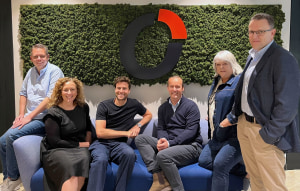What are the two most significant global challenges for the next century and beyond? John Shipley, business unit director, KM Packaging argues that minimising carbon emissions and reducing food waste are right up there.
Flexible packaging is lightweight, resource-efficient, and plays an essential role throughout the supply chain, ensuring products are well-protected, presented, and preserved.
Suppose you were to substitute flexible packaging with any alternative material, such as glass, metal, paper, or board. In that case, you will invariably increase the resources required (energy and water) and increase CO2 emissions, including the impact during transportation of their greater weight and volume.
Sadly, at this time, most flexible packaging is not collected and recycled at the kerbside and there is only limited and restricted non-kerbside collection, resulting in significant residual “value” literally going to waste in landfill.
This issue presents both challenges and opportunities for our industry as we all work towards the 2025 National Packaging Targets of the Australian Packaging Covenant Organisation (APCO), of which KM Packaging is a proud member.
Four key areas
As I see it, four key areas require the most attention to drive forward recyclability and sustainability of flexible packaging.

First is the need for more informed design choices, including material, coatings, size, shape, inks, and adhesives. The second is to increase the scope and range of materials that are collected. Third, we need to see a more significant investment in the sorting and recycling infrastructure and technology. Finally, underpinning all of this should be an education program to overcome some of the myths around plastics and challenge some of the greenwashing that is confusing consumers.
Regarding design, one solution is to simplify the structure used, for example, by moving from mixed polymer laminate structures to easier-to-recycle mono plastics. This approach addresses multi-layered, multi-polymer packaging that is most difficult to recycle.
However, we must be careful – using less complex structures can result in reduced functionality and an increase in food waste. Rather, the focus should be on optimising structures for better long-term recyclability and sustainability, without jeopardising shelf life.
Boosting collection
Of course, to be able to recycle, material needs to be collected in the first place. Progress is being made to increase the recovery of some flexible packaging and the REDcycle program, of which KM Packaging is also a member, is notable.
The scheme allows consumers to return some of their packaging to be recycled, using collection bins at participating retail stores. However, this scheme includes only polyolefins, such as PE and PP, or laminations with a minimum of 70 per cent PE or PP content.
Consumers need to use and understand the Australasian Recycling Label (ARL) to self-sort their packaging, as well as negotiate the confusion that often surrounds other soft plastics, such as PVC, nylon and bioplastics. With a lack of kerbside collection and mainstream composting infrastructure, bioplastics run the risk of being either landfilled, or worse still, contaminating the recycling stream.
Polyolefins make up more than 80 per cent of post-consumer flexible packaging, so focusing attention here makes perfect sense, but we should not stop there.
Progress on PET
Although a relatively small part of overall flexibles by volume, heat-sealable lidding film based PET falls into the harder-to-recycle category, and is currently only accepted through REDcycle where they account for less than 30 per cent of the overall weight of the film.
PET has some really important functional attributes, not present in polyolefins. Its qualities include high heat resistance, high oxygen barrier, strength, and direct food contact safety at elevated (conventional oven) temperatures, which make it the ideal material choice for lidding frozen, chilled, and ambient ready-meals, and convenience product trays.
Additionally, PET can be recycled directly back into food packaging, a truly circular approach. This is already widely done with rigid containers, such as PET drink bottles, rPET and cPET food trays. In contrast, soft or rigid PE and PP cannot go back into food packaging. They are recycled at lower value into non-food products like traffic cones and garden furniture.
One welcome initiative from a consortium of high-profile companies, including Coles and Nestlé, is to build a chemical recycling plant for flexible plastics, set to be the first of its kind in Australia to take plastics and convert them into oil to create new food-safe packaging [read more on p16].
Achieving targets
Flexible packaging contributes strongly to greater sustainability from field to fork.
In ready-meal packaging applications, PET lidding film is designed to protect, present, and preserve our food. It offers tamper evidence and security, and ease of opening, while also allowing the lid to remain on the tray during cooking. It follows optimised packaging design, uses minimum resources, and delivers a high level of functionality.
If we focus on the design of our products, collection systems, and recycling infrastructure – and above all recognise the value of flexible packaging – we can achieve our targets for recyclability, greater sustainability, and create a better planet.
This article was first published in the May-June 2021 print issue of PKN Packaging News, p42.






